How to protect yourself from malicious websites and programs
What for: To stop websites from accessing your smartphone and browser capabilities.
Websites can request your permission to access various smartphone and browser capabilities, such as microphone, camera, location and notifications. Such access may help to improve website performance — for example, online stores may present special offers they have in your city and hide irrelevant ones. However, attackers may use these permissions to spy upon you. Check your list of permissions and revoke unnecessary ones from suspicious websites.
- Tap the three dots at the bottom of the screen;
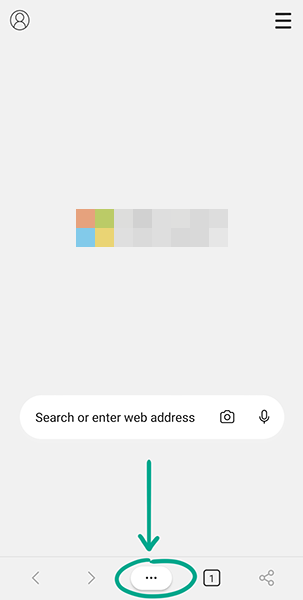
- Select Settings;
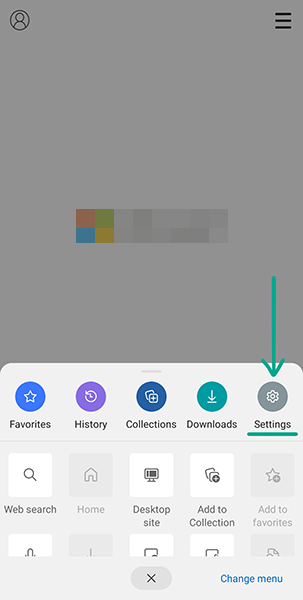
- Go to the Site permissions section;
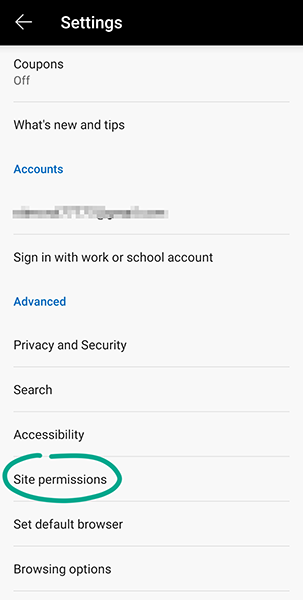
- Tap each permission one by one and block them. If necessary, tap Android Settings to completely revoke a certain permission from the app in your device's settings. Note that this menu only displays the capabilities that have already been requested by websites.
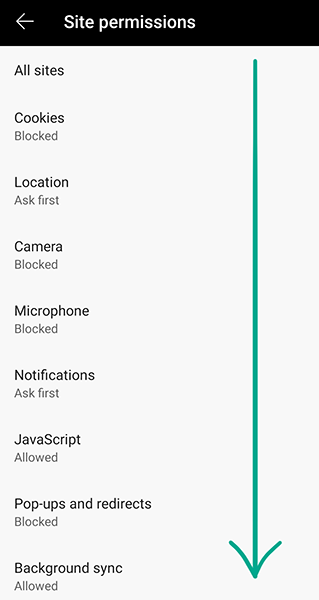
What for: To protect against vulnerabilities.
JavaScript is used to display interactive objects and animations, such as buttons and drop-down menus, on websites. Even though built into nearly all Web pages, this programming language contains plenty of well-known vulnerabilities. These are often abused by cybercriminals to steal personal data and infect smartphones with malware. Disable JavaScript to eliminate the risk.
- Tap the three dots at the bottom of the screen;
- Open Settings;
- Go to Site permissions;
- Tap JavaScript and block it.
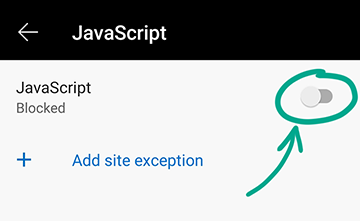
Downside: Some website features will become unavailable, and some pages may work incorrectly.
How to keep corporations out of your business
What for: To keep website owners from knowing too much about you.
When you visit a website, a small file gets saved on your phone. It contains information about the system and your actions on the page. Developers use it to identify visitors and offer personalized ads. You can limit the use of cookies in your browser settings.
- Tap the three dots at the bottom of the screen;
- Open Settings;
- Go to Site permissions;
- Tap Cookies;
- Disable the Cookies option to block all cookies;
- Check the Block third-party cookies box to keep advertising agencies and data analytics companies from tracking you.
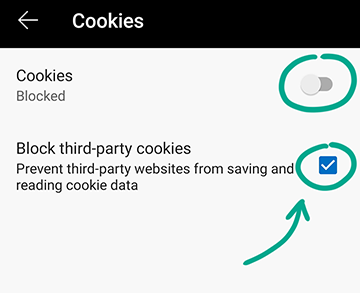
If you choose to block all cookies, some Web pages may work incorrectly. You can disable tracking prevention for such websites if you are sure they are safe:
- Tap the lock icon to the left of the website address;
- In the drop-down menu, disable Configure tracking prevention for this site.
What for: To stop developers from gathering extra information about your activity.
Microsoft Edge collects your browsing data to align the content you see to your preferences. To do that, the browser sends app usage information and browsing history to its developers. You can restrict data transfer to Microsoft in the app settings.
- Tap the three dots at the bottom of the screen;
- Open Settings;
- Go to the Privacy and Security section;
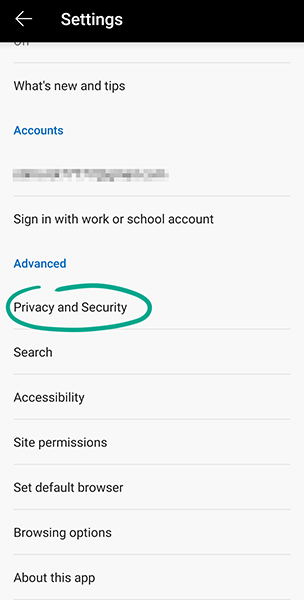
- Clear the Share info about websites you visit and Share usage data for personalization boxes.
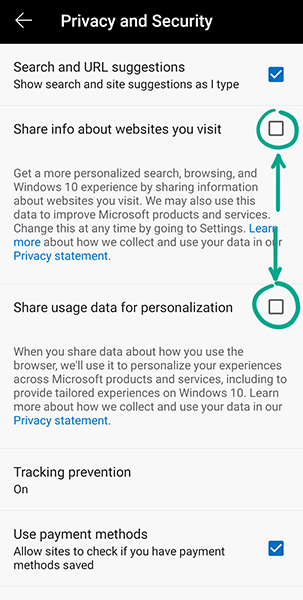
What for: To stop the browser developers from storing your online activity information on their servers.
Edge can sync your browsing history, passwords, bookmarks and other data among the devices where you log in to your Microsoft account. For example, when you bookmark a website on your computer, you'll be able to find it among favorites on your smartphone. Syncing is only possible if the browser stores your personal information on its developers' servers. To avoid that, turn off the syncing.
- Tap the three dots at the bottom of the screen;
- Select Settings;
- Tap your account name or e-mail in the Accounts section;
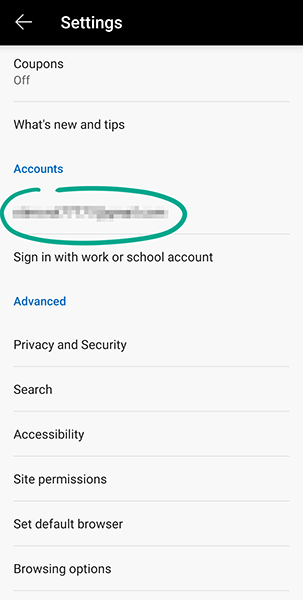
- Select Sync and disable it;
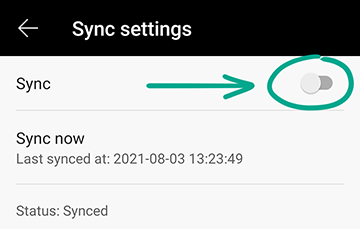
- If you don't want to give up synchronization altogether, clear the boxes in Data items list for the data you don't want to sync.
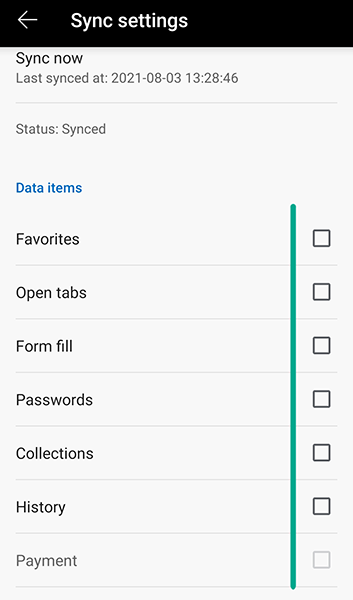
This will stop the browser on the device from syncing information, but you will have to deactivate sync separately on other devices.
Downside: You will only have access to saved passwords, bookmarks and other data from the device where you save them.
What for: To stop Microsoft from getting yout browser activity information.
Microsoft Edge automatically collects diagnostic data for apps. The developers declare they use such data to add new features and fix bugs. However, the browser adds app usage information, such as which pages you visit, to the diagnostic data. You can prevent diagnostic data transfer to Microsoft:
- Tap the three dots at the bottom of the screen;
- Open Settings;
- Go to Privacy and Security;
- Select Usage and crash reports and disable it.
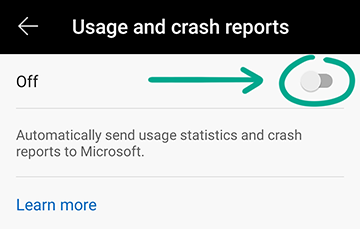
How to hide your data from prying eyes
What for: To leave no tracks.
By default, Microsoft Edge saves a list of pages you visit, files you download, and other information. It helps you find the websites you need and use them comfortably. However, if you share your smartphone, important personal info may be revealed to others. To avoid this, use the private browsing mode. The browser will delete all browsing data from private windows and tabs when you close them, but it won't affect browsing history and website data logging in general.
To activate the private mode:
- Tap the three dots at the bottom of the screen;
- Swipe up from to open the whole menu;
- Select New InPrivate tab.
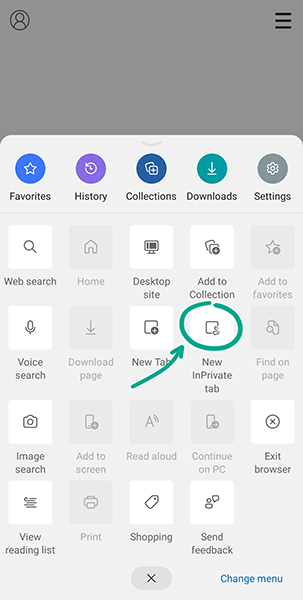
What for: To set the privacy and security level that suits you.
By default, Microsoft Edge protects your privacy when browsing and blocks trackers that collect information about your Internet activities, such as:
- Social media trackers — snippets of code that social networks post on their own and third-party websites. For example, X(Twitter) might embed this type of code in the "share" button on a news portal to find out what websites you visit and track your interests.
- Cookies — small objects containing information about your system and page settings that the website saves on your device.
- Fingerprinters — scripts that record information about your browser and device, such as the screen resolution, system language, installed extensions and other settings.
- Other tracking elements — code snippets embedded in website content, such as banners, buttons, video players and other page elements.
In addition, Microsoft Edge protects you against malicious scripts such as cryptominers, which secretly draw on your device resources.
To configure tracking prevention:
- Tap the three dots at the bottom of the screen;
- Open Settings;
- Go to Privacy and Security;
- Tap Tracking prevention and select the level that suits you:
- Basic. Microsoft Edge will block fingerprinters and terminate dangerous scripts.
- Balanced. In addition to fingerprinters and dangerous scripts, Microsoft Edge will block the tracking tools of advertising networks.
- Strict. Microsoft Edge will block most tracking tools, including its website's own cookies.
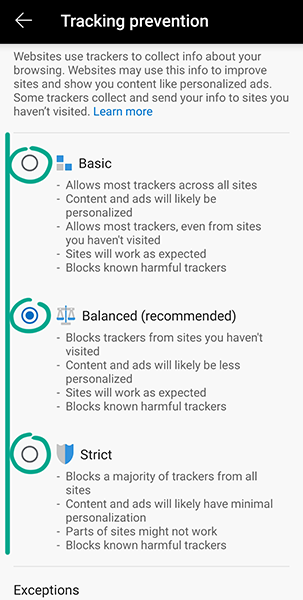
InPrivate mode always uses the strict tracking prevention setting.
Downside: If you select the strict tracking prevention level, some websites may work incorrectly.
What for: To keep the websites you've visited private.
When you start Edge, it can automatically restore the websites from your previous session. This may be convenient, but if you are in a public place, other people might see sensitive information that you prefer to keep private. To avoid this, turn off this feature:
- Tap the three dots at the bottom of the screen;
- Open Settings;
- Go to the Browsing options section;
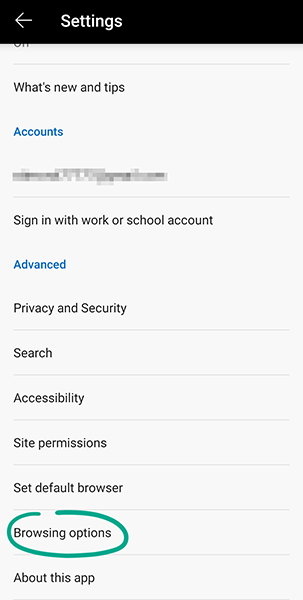
- Tap Continue browsing;
- Select Start fresh. Now a new tab will open each time you start your browser.
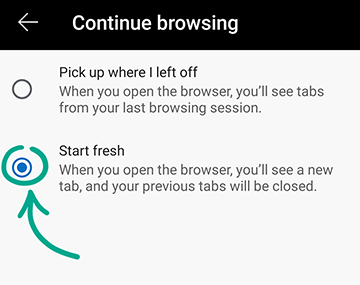
Downside: You will have to open the websites you were visiting before closing the browser manually if you want to go on using them.
What for: To keep people from seeing the pages you've visited.
When you start Edge, it can open the last page you've visited. People that happen to be nearby may see the websites you've visited. To hide this data, set your home page to a new tab or a specific website.
- Tap the three dots at the bottom of the screen;
- Open Settings;
- Go to Home page and select:
- New tab page — a new tab will open when the browser starts;
- A specific page, then type a URL — the corrisponding page will open when the browser starts.
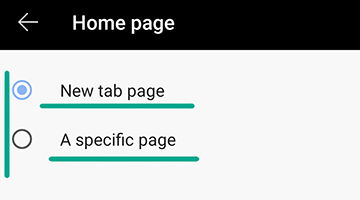
Downside: You will have to open the websites you were visiting before closing the browser manually if you want to go on using them.
By default, new tabs show your frequently visited pages and news feeds. If you want to keep this information private, hide it.
- Open a new tab and tap the three-line icon in the upper right corner of the screen;
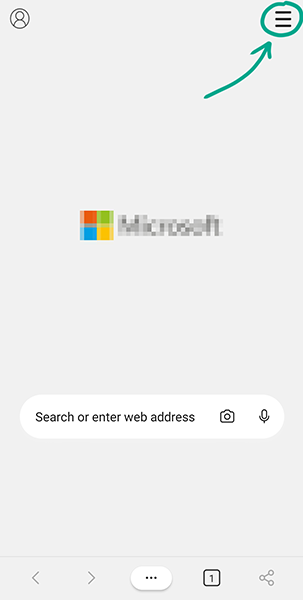
- Select Custom;
- Turn off Show most visited sites and Show feeds.
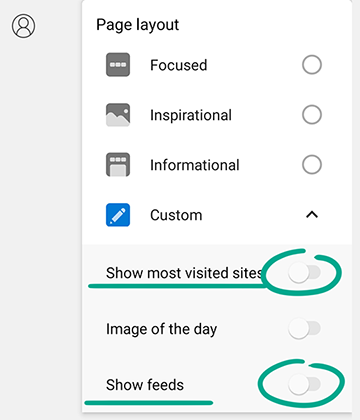
What for: To leave no traces of your activity.
If you use Microsoft Edge on someone else's smartphone or share your device, other people may see your browsing history, downloaded files, passwords, and other confidential info. To keep those secret, clear your browsing data on closing the browser.
- Tap the three dots at the bottom of the screen;
- Open Settings;
- Go to Privacy and Security;
- Tap Clear browsing data;
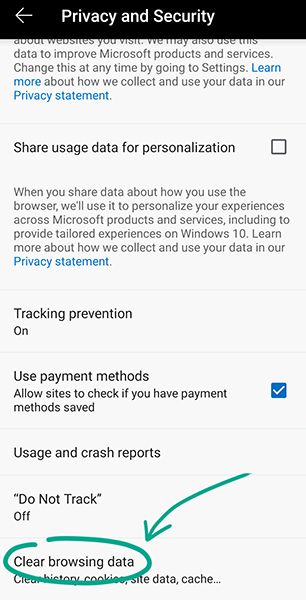
- Enable Clear browsing data upon exit;
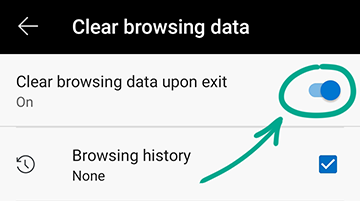
- If you wish, select the information to be cleared upon exit.
Downside: You'll have to type your passwords and other website data all over again each time.
How to protect your data
What for: To keep your contact data private.
If you type your contact data, such as address of phone number, on any website, Microsoft Edge will prompt you to save it. If you agree, the browser will fill it in whenever you complete forms on other websites. It is convenient, yet if someone gains access to your smartphone, they will learn your personal information. To delete your information:
- Tap the three dots at the bottom of the screen;
- Select Settings;
- Go to the Autofill and payments section;
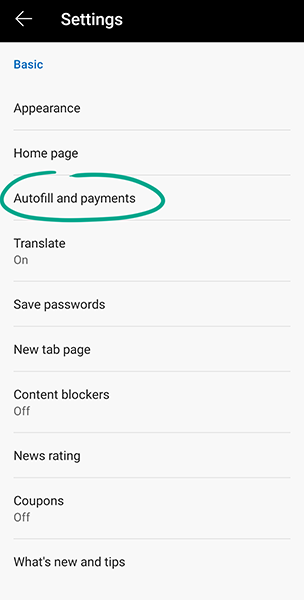
- Turn off Autofill forms;
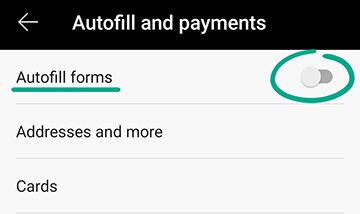
- To delete previously saved data, tap Addresses and more and Cards;
- Select the data to be deleted, tap the trash can icon in the upper right corner of the screen and confirm your decision.
Downside: You will have to enter your address and other contact details manually.
What for: So nobody can gain access to your accounts.
Microsoft Edge can save passwords you use to sign in to websites and fill them in automatically when you return. It is convenient, yet if someone gains access to your smartphone, they'll be able to sign in to these accounts, too. To prevent this, disable saving passwords:
- Tap the three dots at the bottom of the screen;
- Select Settings;
- Go to Save passwords and disable this feature;
- Clear the Auto sign-in check box.
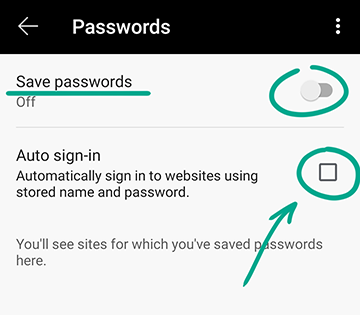
- To delete a stored password for a particular website, select the website from the list, tap the trash can in the upper right corner of the screen and confirm your decision.
Downside: You'll have to enter logins and passwords every time you sign in.
You can avoid the inconvenience and improve the security of your accounts using a password manager. Unlike a browser, it does not access third-party resources on the Web, which means it is protected from malicious websites. Neither can it be hacked via a vulnerable extension or plug-in.
How to feel comfortable online
What for: To avoid distractions.
Websites can send you in-browser notifications about new messages or posts etc. It is convenient, yet multiple notifications may distract you from work. Moreover, some dishonest developers may also use notifications for ads and spam. You can revoke previously given permissions to send notifications and stop websites from requesting them in the future:
- Tap the three dots at the bottom of the screen;
- Select Settings;
- Go to Site permissions;
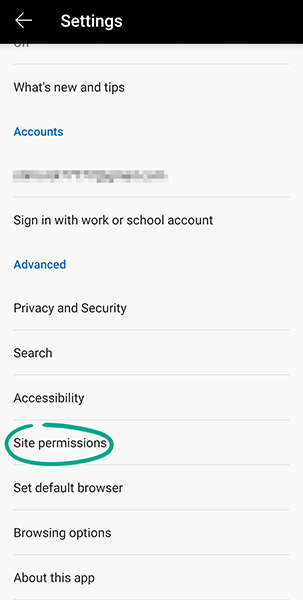
- Turn off Notifications;
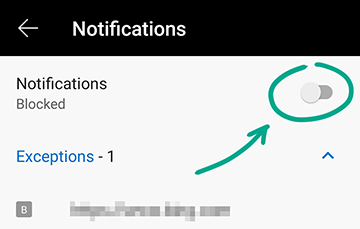
- To prevent individual websites from sending you notifications, select them from the list and disable Notifications for them.







